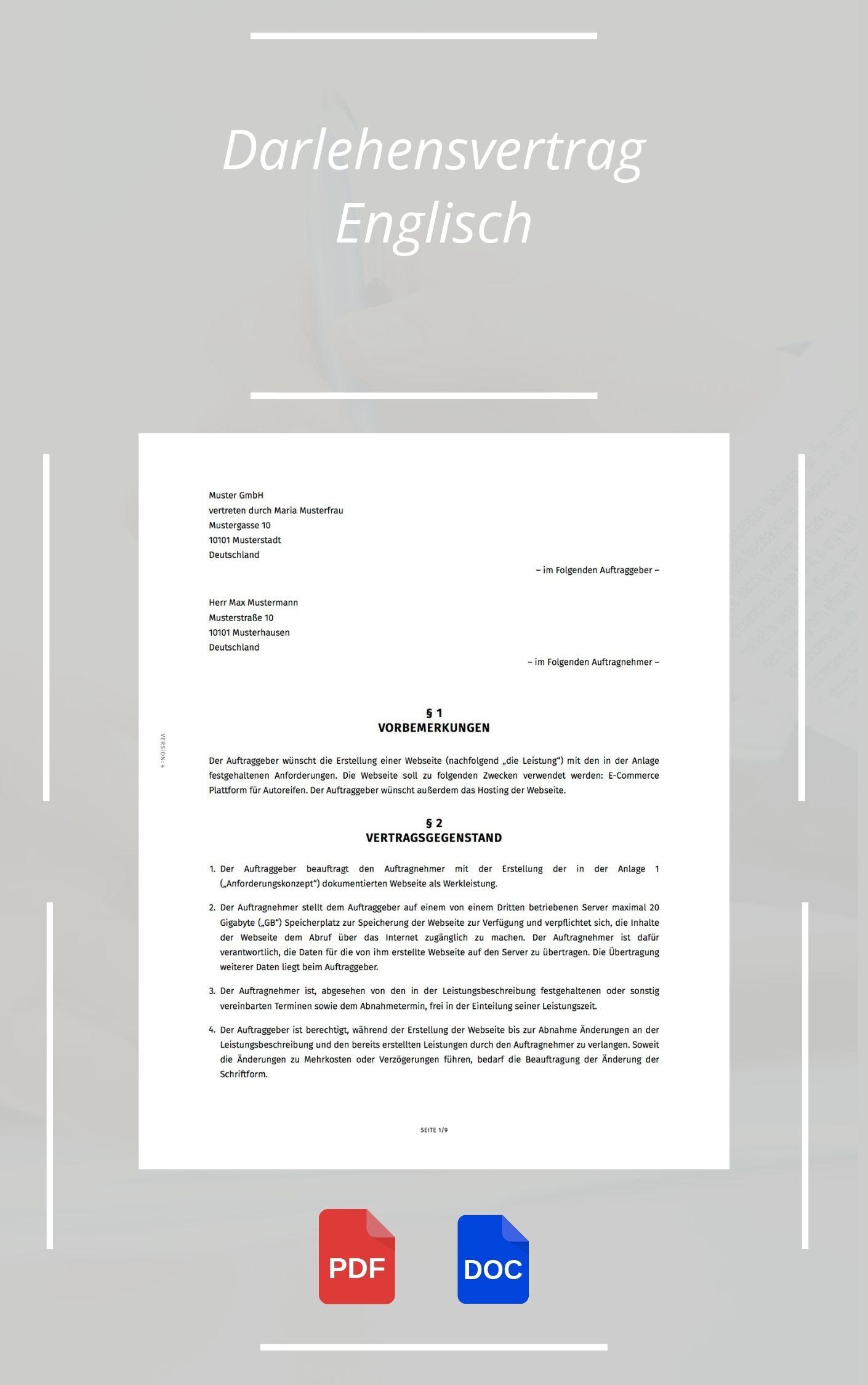WORD

| Darlehensvertrag Englisch |
| PDF und WORD-Format |
| Bewertung: ⭐⭐⭐⭐ – 4,38 Anzahl : 4134 |
| ÖFFNEN |
Muster
Vorlage
FAQ Darlehensvertrag Englisch
Conclusion:
Understanding the key elements and considerations of a loan agreement in English is essential for both borrowers and lenders. By following the guidelines provided in this FAQ, individuals can ensure that their loan agreements are clear, comprehensive, and legally binding. It is always wise to consult legal experts to review and validate the terms of the agreement to protect your rights and interests.
Parties:
This Loan Agreement (the „Agreement“) is entered into between the following parties:
Lender: [Name of the Lender]
Borrower: [Name of the Borrower]
Loan Details:
The Lender agrees to provide the Borrower with a loan in the amount of [Loan Amount] (the „Loan“).
Interest Rate and Repayment Terms:
The Loan shall accrue interest at a rate of [Interest Rate]% per annum. The Borrower agrees to repay the Loan in equal monthly installments over a period of [Loan Term] years.
Security:
The Borrower shall provide the Lender with the following security for the Loan:
[Description of Security].Default Interest:
In the event of default or late payment, the Borrower agrees to pay default interest at a rate of [Default Interest Rate]% per annum on the outstanding balance of the Loan.
Early Repayment:
The Borrower may choose to repay the Loan in full before the end of the agreed Loan Term. In such case, the Borrower shall provide written notice to the Lender and shall be responsible for any applicable early repayment fees or penalties as specified in this Agreement.
Termination Rights:
The Lender reserves the right to terminate this Agreement in the event of a material breach of any term or condition contained herein by the Borrower.
The Borrower may terminate this Agreement by providing written notice to the Lender, subject to any outstanding obligations and charges as specified in this Agreement.
Special Clauses:
[Any special clauses or additional terms can be included here.]Jurisdiction and Applicable Law:
This Agreement shall be governed by and construed in accordance with the laws of [Jurisdiction]. Any disputes arising under or in connection with this Agreement shall be subject to the exclusive jurisdiction of the courts of [Jurisdiction].
Signatures:
This Agreement may be executed in counterparts, each of which shall be deemed an original, and all of which together shall constitute one agreement.
Lender:
[Signature of Lender] [Printed Name of Lender]Date:
Borrower:
[Signature of Borrower] [Printed Name of Borrower]Date:
Note: This is a sample loan agreement template provided for informational purposes only. It is advisable to consult with legal professionals before entering into any loan agreement.
